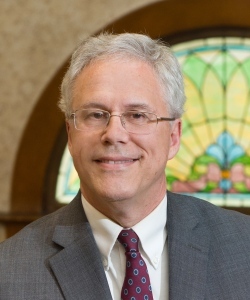On June 17, 2014, the Connecticut Supreme Court decided the case of Palomba-Bourke v. Commissioner of Social Services. Our local newspaper, The Day, wrote the decision allows Connecticut officials to reject Medicaid coverage for nursing home patients if their spouses have trusts funds, no matter if those funds predated the marriage or were never intended to benefit the patients. The Day was not alone in reporting the decision in that manner. But I think that the press is seriously misleading the public in the way it reported the case.
Mary Palomba-Bourke is the beneficiary of a trust under the 1968 Will of her first husband, Edward Palomba. The Will required the Trustee to pay to, or expend for the benefit of, Edward’s wife and children so much of the annual net income and principal as the Trustee deems advisable for their comfortable care, maintenance and support, and the education of the children. Edward died in 1976 and Mary became the beneficiary of the trust. Mary remarried in 2000. Her new husband, Daniel Bourke, filed a Title 19 Medicaid application in 2009. The trust had $514,977 in it at the time of the 2009 application. Their combined assets were $655,624, if the trust assets were counted. The Connecticut Dept. of Social Services denied the Medicaid application stating that the trust assets were countable and Mary and Daniel had too much in assets to qualify for Medicaid. The applicant can only have $1,600, and the spouse of the applicant can only have the Community Spouse Protected Amount ($109,540 in 2009; $117,240 today). Mary asked for a fair hearing. DSS denied the appeal. Mary appealed the case to the Superior Court. The Superior Court ruled against Mary and denied Daniel his Title 19 benefits. Mary appealed the case to the Connecticut Supreme Court. In the Supreme Court, Mary conceded that the trust under Edward’s 1968 Will was an available asset, but argued the trust was created and became irrevocable before the Medicaid Catastrophic Coverage Act of 1988 (MCCA) so the trust rules in 1968 or 1976 apply. Back then, trust assets did not count if the Medicaid applicant was not a beneficiary. Daniel Bourke was not the beneficiary of Edward Palomba’s Will. In 1988, MCCA changed the Medicaid rules so assets of one spouse are deemed assets of both spouses. The Connecticut Supreme Court upheld the ruling in the Superior Court concluding that the Medicaid rules that exist at the time of application is filed apply, not the rules when the trust was created in 1968 or when Mary became a beneficiary in 1976.
Even under today’s Medicaid rules, if the trust had been a discretionary trust that allowed the Trustee to make distributions as it deemed advisable in its sole, absolute, and uncontrolled discretion, it would not be a counted asset. The trust, under Edward’s Will, required distributions for “comfortable care, maintenance, support and education,” so it was available for beneficiary’s support. The press is wrong to give the impression that all trust funds are available assets under the Medicaid rules. The language of the trust matters.
There are many unanswered questions about this case that puzzle me:
1. Knowing that the trust under Edward's Will was a support trust, why didn't Mary spend the trust principal on exempt assets and keep the Community Spouse Protected Amount ($109,540 in 2009; $117,240 today) before Daniel applied for Title 19 so there were no countable assets left in the trust?
2. Why didn’t the Trustee distribute the funds to the children who were also beneficiaries under the Trust before Daniel applied for Title 19?
3. Why didn’t the Trustee refuse to pay the principal for Mary or Daniel’s benefit? Edward would certainly have wanted the trust principal to go to his children instead of going to the care of Mary’s new husband. If the Trustee refused to pay or all the assets had been distributed pursuant to the trust provisions, the assets would not be available and could not be counted in Daniel’s Medicaid application.
Trust law protects the rights of all beneficiaries of a Trust to receive distributions contemplated by the trust.
The sky is not falling as the press might have us believe. This case did not change the available strategies to preserve family assets. It simply closed the door on an improbable theory of asset exemption.

